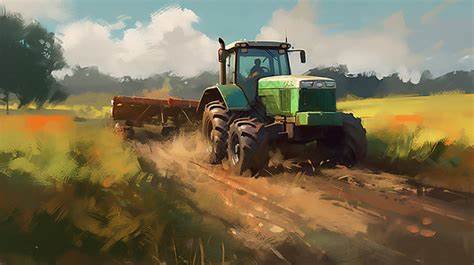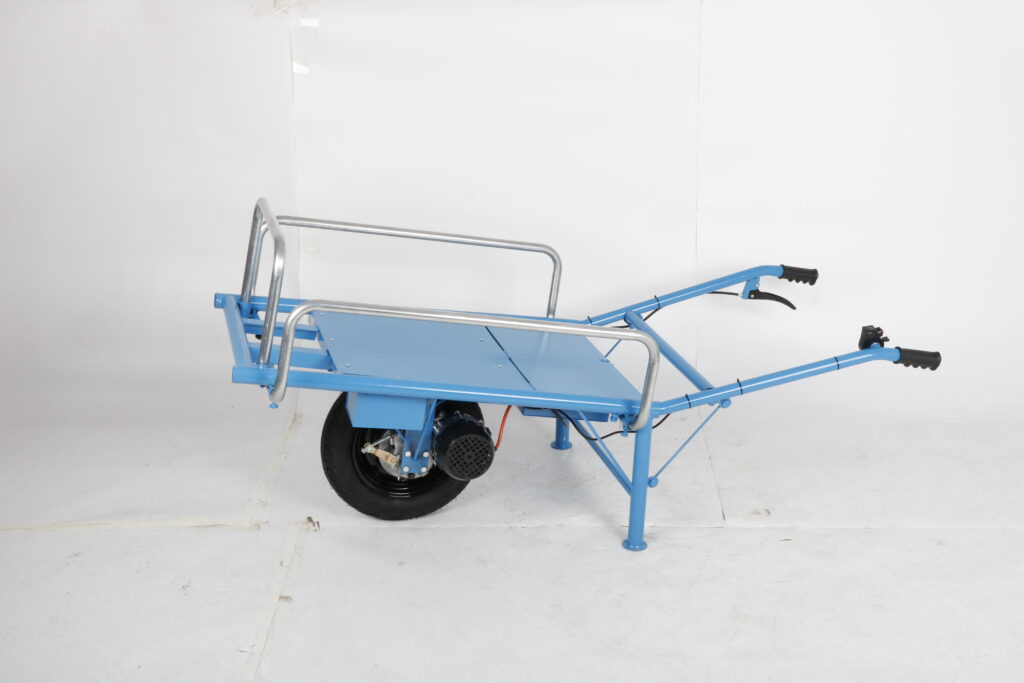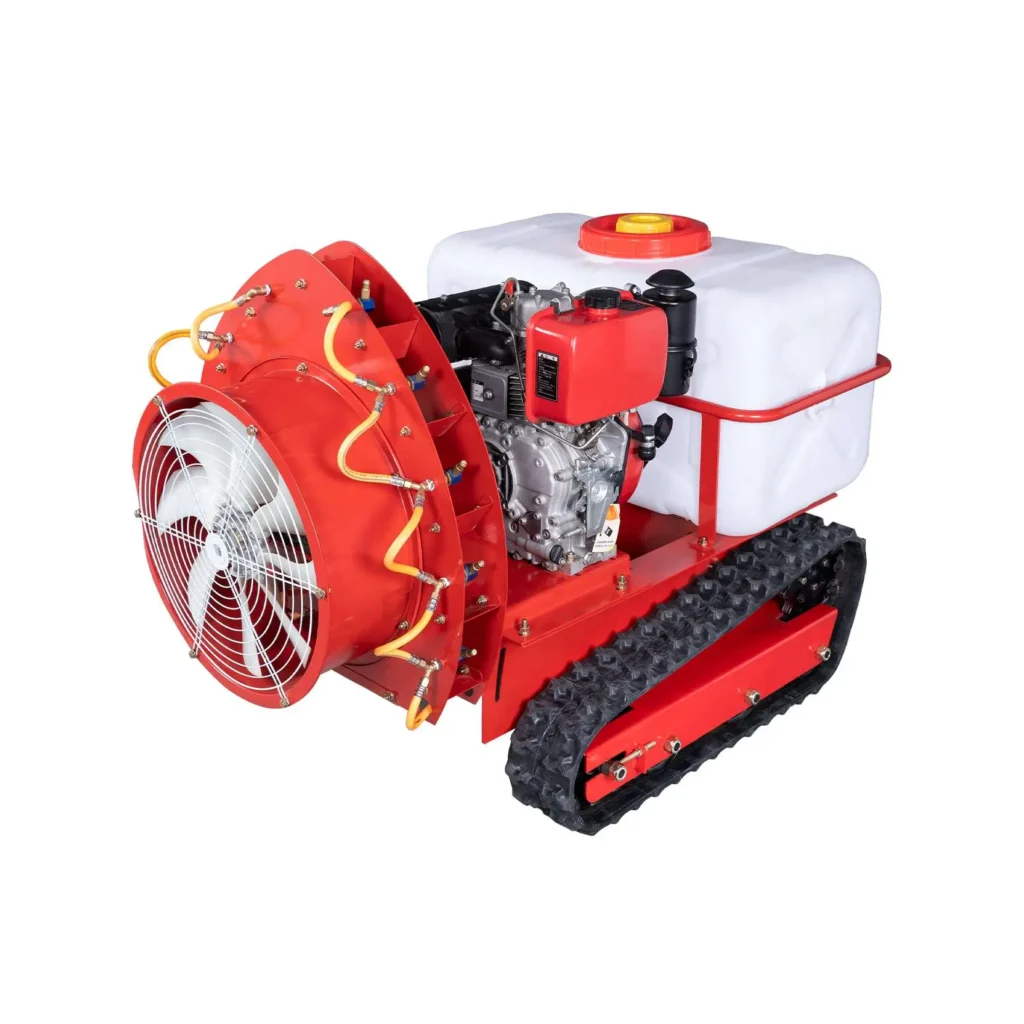
Innovative Farming: Small Machines Lead the Way

Agricultural Modernization: Advantages of Precision Farming
As the foundation industry for human survival and development, agriculture’s modernization process relies on precision farming. Precision farming is a method of operation that utilizes advanced technological means to precisely control the agricultural production process. This article will focus on how agriculture achieves precision farming and the advantages it brings.
Implementation Methods of Precision Farming
Scientific Regulation of Production Environment: By monitoring factors such as soil nutrients, water content, and temperature, scientific allocation of fertilization and irrigation is ensured to provide crops with the most suitable growth environment.
Precision Fertilization and Spraying: Utilizing modern equipment, fertilization and spraying are precisely controlled according to crop growth stages and needs, reducing waste and improving effectiveness.
Precision Management of Crop Growth: Through precise sowing, spacing control, and dense planting, crop growth structure is optimized to increase yield and reduce costs.
Application of Smart Agricultural Machinery: Utilizing intelligent agricultural machinery equipment such as smart tractors and drones achieves automation and intelligent management throughout the agricultural production process.
Advantages of Precision Farming
Increased Production Efficiency: Precision farming effectively increases crop growth efficiency, reduces production costs, and thereby enhances agricultural productivity. Scientific regulation of the production environment and precise fertilization and spraying make crop growth smoother, shorten cycles, and increase yields.
Resource Conservation: Differentiated management reduces the use of pesticides, fertilizers, and other resources, lowering production costs and promoting their rational use. Reducing the use of pesticides and fertilizers not only saves costs but also reduces environmental pollution.
Improved Product Quality: Precision farming can precisely control the crop’s growth environment, allowing crops to absorb more nutrients, thus enhancing the quality and market competitiveness of agricultural products. Optimizing crop growth environments improves crop quality and adds value to products.
Environmental Friendliness: By reducing the use of pesticides and fertilizers, precision farming helps reduce soil, water, and air pollution, promoting sustainable agricultural development. Environmentally friendly agricultural production not only benefits farmers’ health but also protects and improves ecological environments.
Key Role of Small Agricultural Machinery
Small agricultural machinery plays a significant role in modern agricultural production, mainly in the following aspects:
Enhancing Mechanization Level: The application of small agricultural machinery effectively improves the mechanization level of agricultural production. Compared to traditional manual labor, small agricultural machinery can complete various agricultural operations more quickly and accurately, greatly reducing farmers’ labor intensity.
Strong Adaptability: Small agricultural machinery, with its small size and flexible operation, is suitable for operations in different-sized fields. Whether it’s field crops, orchards, or vegetable plots, small agricultural machinery can meet the planting needs of different crops, providing convenience for agricultural production in different regions and for different crops.
High Technological Content: Modern small agricultural machinery integrates advanced technologies such as intelligent control and GPS navigation. The application of these technologies enables small agricultural machinery to achieve precise operations and automated operation, greatly improving operational efficiency and accuracy.
Energy Saving: Small agricultural machinery typically uses diesel or electric drive, resulting in higher energy utilization efficiency compared to traditional farming tools. The use of small agricultural machinery effectively reduces energy waste, meets the requirements of energy conservation and emission reduction, and contributes to environmental protection.
Small Agricultural Machinery Suitable for Precision Farming
Small Cultivator: Suitable for small fields, orchards, and vegetable plots, loosening the soil promotes crop growth.
Branch Crusher: Used to process tree branches and residues in orchards and forests, crushing them for surface coverage or organic fertilizer.
Lawn Mower: Mainly used for lawn trimming and weed clearance, maintaining field cleanliness and reducing weed competition.
Corn Harvester: Used for harvesting corn fields, improving harvesting efficiency through automated harvesters.
Film Laying Machine: Used for ground film covering operations in orchards, vegetable greenhouses, providing a good growth environment.
Transporter: Used for cargo handling and transportation, improving the efficiency of field operations.
Sprayer: Used for pesticide spraying operations in orchards, vegetable greenhouses, preventing and controlling pests and diseases, and improving crop yield and quality.
Water Pump: Used for irrigation, drainage, ensuring water needs for crop growth and drainage requirements.
Introduction and Operation Methods of Various Agricultural Machinery

Small Cultivator
Application Scenario: Small cultivators are widely used in land cultivation and preparation work in farmland, orchards, and vegetable plots. They are suitable for land reclamation, leveling, plowing, and loosening.
Functional Introduction: Small cultivators rotate hoes or harrows on the soil surface to loosen the soil, improve soil structure, and enhance soil permeability and water retention, beneficial for crop root growth and nutrient absorption.
Operation Method: Operating a small cultivator typically requires the driver to operate inside the cab. By controlling the steering wheel, throttle, and brake pedal, the operator adjusts the machine’s forward, backward, steering, and working depth parameters to complete various land cultivation and preparation tasks.

Branch Crusher
Application Scenario: Branch crushers are mainly used for pruning, trimming, and processing operations in orchards and forests. In orchard management, branch crushers can shred tree branches and leaves for disposal.
Functional Introduction: Branch crushers use high-speed rotating blades or saw blades to cut branches, leaves, and other crop residues into small pieces or fragments, facilitating subsequent processing or use as organic fertilizer, while also reducing weed growth in farmland.
Operation Method: Operating a branch crusher typically requires placing the branches and leaves to be processed into the feeding port of the crusher, then starting the machine. By controlling the start button, speed adjustment handle, and other operating mechanisms, branches and leaves are shredded and processed.

Lawn Mower
Application Scenario: Lawn mowers are mainly used for lawn trimming and weed removal in lawns, grasslands, and roadside slopes. They are commonly seen in cities, rural areas, and parks.
Functional Introduction: Lawn mowers trim and maintain lawns and weeds by rotating blades or saw blades, keeping fields clean and reducing weed competition.
Operation Method: Operating a lawn mower typically requires pushing or driving the machine. By controlling the throttle, blade start-stop button, and other operating mechanisms, the forward speed and blade speed of the mower are adjusted to complete lawn trimming and weed removal tasks.

Corn Harvester
Application Scenario: Corn harvesters are mainly used for large-scale corn field harvesting. During the corn harvest season, corn harvesters are ubiquitous.
Functional Introduction: Corn harvesters harvest mature corn cobs, remove corn leaves, and achieve automated harvesting, improving harvesting efficiency and reducing manual labor.
Operation Method: Operating a corn harvester typically requires the driver to operate inside the cab. By controlling the steering wheel, throttle, and brake pedal, the operator adjusts the machine’s forward, backward, steering, and harvesting speed parameters to complete corn harvesting tasks.

Film Laying Machine
Application Scenario: Film laying machines are mainly used for film covering operations in orchards, vegetable greenhouses, and other areas. They play a crucial role in winter insulation, early spring planting, and late autumn planting.
Functional Introduction: Film laying machines lay plastic films on the ground in agricultural areas, covering crop cultivation areas and providing a good growth environment, promoting early ripening and increased yields.
Operation Method: Operating a film laying machine typically requires the driver to operate inside the cab. By controlling the start button, conveying mechanism, film laying device, and other operating mechanisms, the machine’s forward, backward, steering, film laying speed, and coverage area parameters are adjusted to complete film laying operations.

Transporter
Application Scenario: Transporters are mainly used for cargo handling and transportation in farmland, orchards, and other areas. During the harvest season, transporters play an important role in transportation.
Functional Introduction: Transporters transport agricultural products, pesticides, fertilizers, and other goods, improving the efficiency of field operations and reducing manual labor.
Operation Method: Operating a transporter typically requires the driver to operate inside the cab. By controlling the steering wheel, throttle, brake pedal, and other operating mechanisms, the operator adjusts the machine’s forward, backward, steering, speed, and cargo handling position parameters to complete cargo handling and transportation tasks.

Sprayer
Application Scenario: Sprayers are mainly used for pesticide spraying operations in orchards, vegetable greenhouses, and other areas. During seasons with severe pest and disease outbreaks, sprayers are essential tools for prevention and control.
Functional Introduction: Sprayers evenly spray pesticide solutions on crop surfaces through spray nozzles and pipes, preventing and controlling pests and diseases, and improving crop yield and quality.
Operation Method: Operating a sprayer typically requires the driver to operate inside the cab. By controlling the spray nozzles, spray pipes, and medicine pump, the operator adjusts the machine’s forward, backward, steering, spray pressure, and spray range parameters to complete pesticide spraying operations.

Water Pump
Application Scenario: Water pumps are mainly used for irrigation, drainage, and other operations. During dry seasons and floods, water pumps play a key role.
Functional Introduction: Water pumps are driven by electric motors or diesel engines to extract groundwater or river water for irrigation in farmland or discharge accumulated water in fields, ensuring the water needs for crop growth and drainage requirements.
Operation Method: Operating a water pump typically requires the driver to operate inside the cab. By controlling the start button, throttle, pump switch, and other operating mechanisms, the machine’s working status and water flow are adjusted to complete irrigation or drainage operations.

Ⅰ、How to become a dealer of ALYNON?
To become a dealer of ALYNON, you only need to purchase one full container of products.
Ⅱ、Guarantees for becoming an ALYNON dealer:
A. Zero pressure:
We assist you in sales. Our brand will utilize powerful online sales capabilities (independent websites, social media matrix, platform matrix with real customer cases) to help you sell products and expand market share more effectively.
Further information pls find in our homepage: http://alynonmachine.com
B.Zero risk:
Machines that remain unsold after one year from starting sales will be repurchased by ALYNON at the original price.
This event is valid for one year, from April 30, 2024, to April 30, 2025.


